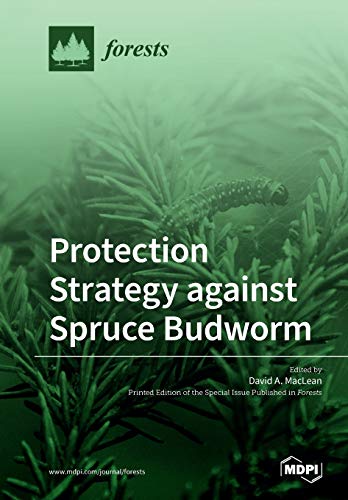

Most ebook files are in PDF format, so you can easily read them using various software such as Foxit Reader or directly on the Google Chrome browser.
Some ebook files are released by publishers in other formats such as .awz, .mobi, .epub, .fb2, etc. You may need to install specific software to read these formats on mobile/PC, such as Calibre.
Please read the tutorial at this link: https://ebookbell.com/faq
We offer FREE conversion to the popular formats you request; however, this may take some time. Therefore, right after payment, please email us, and we will try to provide the service as quickly as possible.
For some exceptional file formats or broken links (if any), please refrain from opening any disputes. Instead, email us first, and we will try to assist within a maximum of 6 hours.
EbookBell Team

5.0
88 reviewsSpruce budworm (Choristoneura fumiferana (Clem.)) outbreaks are a dominant natural disturbance in the forests of Canada and northeastern USA. Widespread, severe defoliation by this native insect results in large-scale mortality and growth reductions of spruce (Picea sp.) and balsam fir (Abies balsamea (L.) Mill.) forests, and largely determines future age–class structure and productivity. The last major spruce budworm outbreak defoliated over 58 million hectares in the 1970s–1980s, and caused 32–43 million m3/year of timber volume losses from 1978 to 1987, in Canada. Management to deal with spruce budworm outbreaks has emphasized forest protection, spraying registered insecticides to prevent defoliation and keep trees alive. Other tactics can include salvage harvesting, altering harvest schedules to remove the most susceptible stands, or reducing future susceptibility by planting or thinning. Chemical insecticides are no longer used, and protection strategies use biological insecticides Bacillus thuringiensis (B.t.) or tebufenozide, a specific insect growth regulator. Over the last five years, a $30 million research project has tested another possible management tactic, termed an ‘early intervention strategy’, aimed at area-wide management of spruce budworm populations. This includes intensive monitoring to detect ‘hot spots’ of rising budworm populations before defoliation occurs, targeted insecticide treatment to prevent spread, and detailed research into target and non-target insect effects. The objective of this Special Issue is to compile the most recent research on protection strategies against spruce budworm. A series of papers will describe results and prospects for the use of an early intervention strategy in spruce budworm and other insect management.